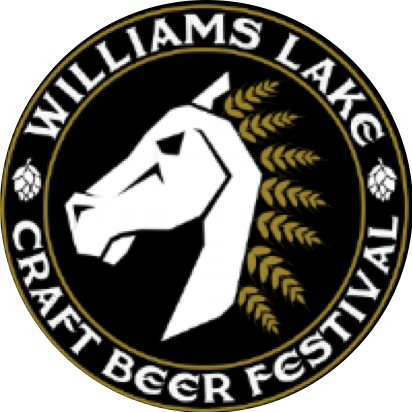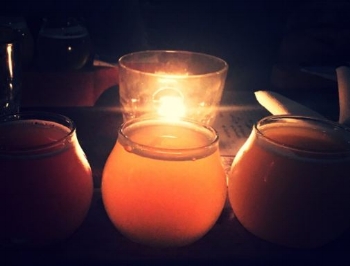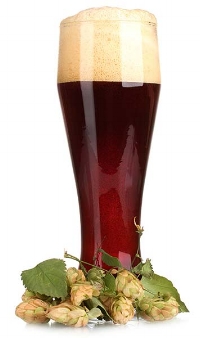Clueless as to what craft beer nerds are talking about?
Take this crash course in craft beer lingo and in no time you’ll be talking like a “Hophead.”
First off, know this: How many "types" of beer are there?
Two - Ales & Lagers - All beers are essentially one or the other.
What's the difference? Yeast
Got that? Let’s go!
Alcohol by Volume (ABV) - Make sure you know this one. A measurement of the alcohol content of a solution in terms of the percentage volume of alcohol per volume of beer. Most beers check in at about 5% ABV. If you get into double digit ABV, those are “boozy.”
Ales - The older of the two types of beer, ale production can be traced back more than 5000 years. Ales typically are fermented at warmer temperatures than lagers, and are often served warmer.
Alt Bier - Originally a term for a top-fermenting beer. Classic German examples are copper in color, and right around 4.7% ABV.
Barleywine – BEWARE! These are higher alcohol, quite malty, English style beers. Alcohol levels are usually between 8.5% and 12% ABV. You may want to “sip” these and share with friends. Or not.
Belgian Blonde – Not what you’d think. This blonde has smooth flavor with slightly sweet fruitiness and maltiness over spice and pepperiness.
Belgian Style - Belgian beers are primarily ales with a heavy emphasis on malts, a lot of fruity flavors, and some spice or pepperiness.
Berliner Weisse – A regional beer of northern Germany dating back to the 16th century. Pale, top-fermented, and made with wheat. Generally cloudy, a bit sour in taste, and around 3% alcohol by volume.
Bock – A very strong German lager traditionally brewed in winter to celebrate the coming spring. Full-bodied, malty, well-hopped.
Body - Defined as “The sensation of palate fullness in the mouth on a range from thin to thick,” you can also think of Body in terms of the consistency in the mouth, from “watery” to “full-on thick bodied like maple syrup.” Okay, that last one’s a bit extreme.
Bomber - A 650ml/22-ounce bottle of beer. The ‘big bottle.”
Brett – Not your high school boyfriend, it is short form for Brettanomyces, a wild yeast (now domesticated) used in fermentation. It often turns beers tart and funky.
Brewpub – A pub that makes its own beer and sells at least 50% on premises. Some may not even bottle their product so seek these places out.
Cask - A container of beer, typically made of metal, used to hold live ale as it ferments. The beer is not initially force carbonated, but gains natural carbonation in the cask over time as yeast is introduced. So-called "cask beer" is traditionally served slightly warmer in temperature than draft beer.
Cellaring - Storing or aging beer at a controlled temperature (like in a cellar, obviously) to allow maturing.
Chill Haze – Sometimes just called “Hazy.” Cloudy appearance caused when the proteins and tannins naturally found in finished beer combine upon chilling into particles large enough to reflect light or become visible. Don’t be scared. You shouldn’t be able to see through every beer.
Chocolate malt – Who doesn’t love chocolate? And it’s now available in beers! Sort of. Malted barley that has been roasted to a deep brown color gives a nutty, toasted flavor to beers as well as deep reddish brown color.
Crushable - An easy-going, super-drinkable beer. These are well-balanced beers with low-to-medium alcohol by volume (ABV) but tons of flavor that make you want to go back for more. As in, “Oh man, That ISA is so crushable! I’m having another!"
Dank - A descriptive term used for hoppy beers, especially IPAs, meaning it has sticky, resin-y, and marijuana-like characteristics, dude.
Doppelbock – “Doppel” means double and while these are stronger brews than the traditional German bocks, they twice as strong. Very full body with a high alcoholic flavor. Low hop flavor and aroma with a sweet finish. Typically 17-30 IBU, 6.5% -8% ABV.
Dry Stout – The Irish version of stout, it’s lower in alcohol (3.8%-5% ABV), exhibiting a dry roasted bitterness in the finish from roasted barley. They are famous for their head retention. This is the style most commonly associated with the nitrogen-cascading head effect. Think “Guinness.”
Dubbel – a Belgian style, dubbels are generally darker in color. Dried fruit flavors, with practically no hoppiness present and a dry finish. They typically range from 6.5% to 8% ABV.
Dunkelweizen – Thanks be to the Germans for this one. "Dunkel" means dark. "Weizen" means wheat. You’ll get hints of clove and banana and it is famous for raison and caramel flavors. They tend to be of medium strength, but can be as high as 8% ABV.
Growler – Typically a 2L jug, used by brewpubs to sell beer to-go. Often a customer will pay a deposit on the growler but can bring it back for a re-fill again and again. And again. And again.
Gose – Don’t call it “Goose,” it’s “Goes-uh” like “Rosa.” A German beer that’s generally sour without being tart, and not bitter. Dominant flavours include a lemon sourness, a herbal characteristic, and a strong saltiness. Often under 5% and an IBU around 10.
Head Retention – “Head” is the foam on top of the beer and “retention” is the beer’s ability to retain a nice foamy head for a long period of time. Makes the beer look great on Instagram.
Hefeweizen - “Hefe” means yeast in German and “Weizen” means wheat. The classic Bavarian Hefeweizen tends to be fairly low in alcohol and gives off an aroma and taste commonly associated with banana, clove, and some say bubble-gum, but that’s usually after their 3rd or 4th Hefe.
Helle – This is a term used mainly in describing German wheat beer. It means pale – in contrast to Dunkle or dark - as in, “Why the helle is this beer so clear?”
Hophead - Someone who appreciates highly-hopped beer like IPAs, and will travel around the country in search of a new, hoppy beer. Kind of like the Grateful “Dead Heads” of the 60s, without the tie-dye.
Hoppy - A beer that strongly exhibits the flavor and aroma of hops. Since hops can be so different, it’s hard to pinpoint exactly what somebody means by “hoppy.” Typically, the beer is bitter and smells like citrus, pine resin, flowers; it may be describes as herbal or earthy. Some also say it smells of “cat pee,” but that’s not what you want to hear when you’re asking for a recommendation.
Hops – A cone-like flower that is responsible for the bitterness in beer, also adding balance by counteracting the sweetness of malts. There are many varieties of hops cultivated around the world. They have cool names like Cascade, Centennial, Simcoe, Chinook, Palisade, Comet, Mosaic, Fuggles…
IBU (International Bitterness Unit) – Get to know this one! It is a number that denotes the bitterness of the beer. Most beers sit between 10 & 90 on the scale with higher IBU being the more bitter the beer. Of course some breweries make beer that’s well above 100. Hopheads seek out these beers.
Imperial - Beers that are described as “imperial” or “double” are larger versions of the style listed on the beer. They usually have more of something: more malt, more alcohol, more sweetness, more bitterness and/or more hops.
IPA – India Pale Ale. A strong, hoppy Pale ale. The style originated in Britain in the 19th century as British brewers tossed tons of hops into ales to preserve them during long ocean voyages to India. Just as citrus fruit prevented scurvy, this beer saved British officers from sobriety.
ISA - India Session Ales (ISA), or Light IPAs. Yep, they are a thing now. The idea is a hop forward bitter beer with lower alcohol content, usually under 5%. That makes it “sessionable,” as in, “Hey dude, that sessionable ISA is most crushable!”
Imperial Stouts – Up there at 8%+ ABV, with an extremely rich malty flavor. Originally brewed as a winter warmer in the Tsarist Russian Empire. “Dosvedanya!”
Lager - The second main style of beer (ale is the other), “lagern” is German for “to store.” It is fermented at lower temperatures and usually takes longer to ferment than ales, thus the ‘storing” of the beer. Lagers are typically crisp, delicate and as refreshing as an October Cariboo morning.
Lambic – A traditionally Belgian brew that is typically sour. It is usually fruit flavored (peach, raspberry, cassis, cherry) and fermented with wild yeast, and resembles wine and champagne more than any other beer in the world.
Maibock - Lighter in color with an average strength of 6% -7.5%. Hop bitterness is low. (20-35 IBU). Some times called “Hellesbock.”
Mouthfeel – How a beer feels in the mouth. Usually describes as thin or full. Includes carbonation, fullness and aftertaste (including burps.)
Nitrogenation - The addition of Nitrogen to a beer gives way to much smaller bubbles, creating a smoother, creamier experience. Very nice!
Pale Ales - Golden to copper in color, pale ales aren’t really “pale.” They have low to medium maltiness, with various hops providing flavor and bitterness. Not as hoppy as the IPAs, but you’ll notice some hop bitterness.
Pilsner – Originated in the town of Pilsen, of the Czech Republic, pilsners are typically crisp and refreshing, with a light to medium body and a clear, light to deep gold appearance. Czechs and Germans love these! The Germans kick up the bitterness a bit; somewhere between 30-40 IBU.
Porters – These beers are dark; almost black. Porters may be brewed with a variety of flavours: coffee, vanilla, chocolate, coconut, peanut butter... pretty much anything you want to toss in the vat. Porters range from 4% -6.5% ABV, and 20-40 IBU.
Quadrupel - Quads are the darkest and the strongest of the Belgian style beer, with an emphasis on the malt. They tend to be a little harder to find.
Saison - It was designed to be a thirst-quencher for local farm workers. At 5% - 7% ABV, Saisons are regarded as "light" summer specialties (yeah well, compared to the typical strengths of Belgian beers...). They are usually amber to orange in color, and often quite dry, with a citric, peppery, quenching quality. A great beer for post-lawn mowing. But please don’t drink & mow.
Scotch Ale –Traditionally strong, very dark, thick and creamy. Higher ABV (6%-8%), Scotch ales are malty and full-bodied, with a clean and balanced alcohol flavor, and very low hop profile (25-35 IBU). They are often peaty or smoky in character and may have a fruity aroma or flavor. And as they say in Scotland, “If it’s not Scottish, it’s CRAP!”
Session Beer – A category of beers that are marketed for their notably lower alcohol level typically, less than 5% ABV. The basic idea of a session beer is that you can drink multiples of these beers over the course of an evening without falling off your stool.
Sour Beer - beer which has an intentionally acidic, tart or sour taste. The most common sour beer styles are Belgian. Pucker up!
Skunked or Skunky – Time for a science lesson: When UV light strikes beer, it causes chemicals to break down, creating compounds identical to those found in skunks’ spray. Never buy bottled beer that’s been sunning in a window like a college kid on Spring Break.
Tripel - Belgian style that’s lighter in color, yet higher in strength, usually over 8% ABV. Tripels can be very dry to very sweet, spicy, fruity, with lots of carbonation.
Trappist – A beer brewed within a Trappist monastery, under the control and responsibility of the monastic community. Only 6 breweries (5 in Belgium and one in Holland) can use the designation “Trappist”: Chimay, Orval, Rochefort, Westmalle, Westvleteren and Achel. Not well advertised due to the “vow of silence” thing.
Weizenbock - amazingly complex beers, with cloves, bananas, raisons, and caramel in the flavor, and often over 6% ABV. As wheat beers go, they are stronger than most in alcohol. And, no, it wasn’t just some German mixing up the pronunciation of “Bud-weiser.”
Wet Hopping - AKA “fresh hopping” Usually hops are harvested and then dried, but these aren’t, with the wetness producing unique flavors and aromas. These beers are produced after the hop harvest in August and September and area usually ready by late September or early October. Rule of the Wet Hop: Drink this style of beer as fresh as possible. Shouldn’t be a problem, right?
Wit – “White” beer. They usually tip the scale around 5% ABV. It is a cloudy wheat beer, spiced with coriander and orange peel. (Whatever coriander is.)
Yeast –Yeast eats the sugars in the wort and gives of alcohol and carbon dioxide. Yeast is what makes the alcohol in beer. ‘nuff said.







